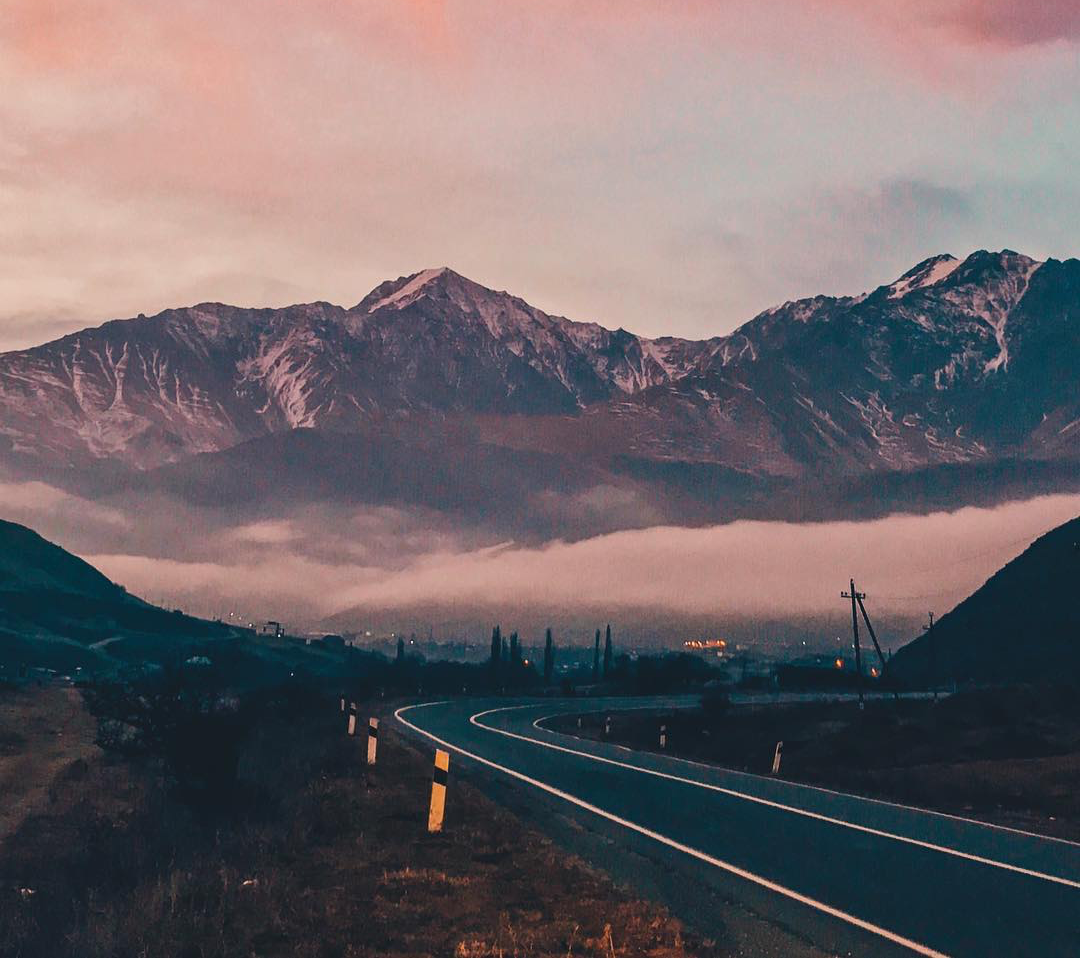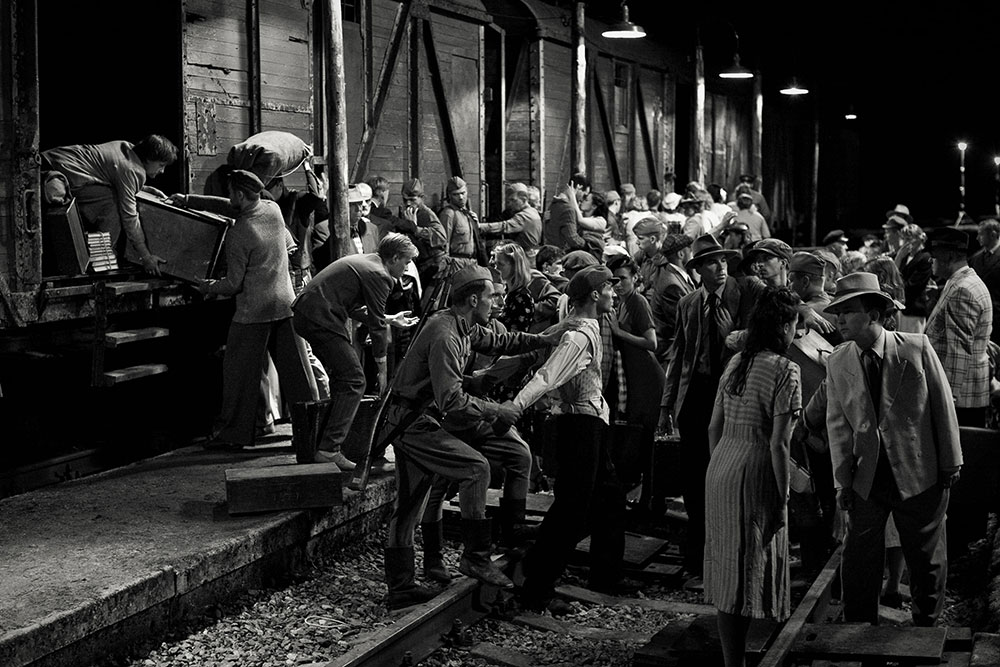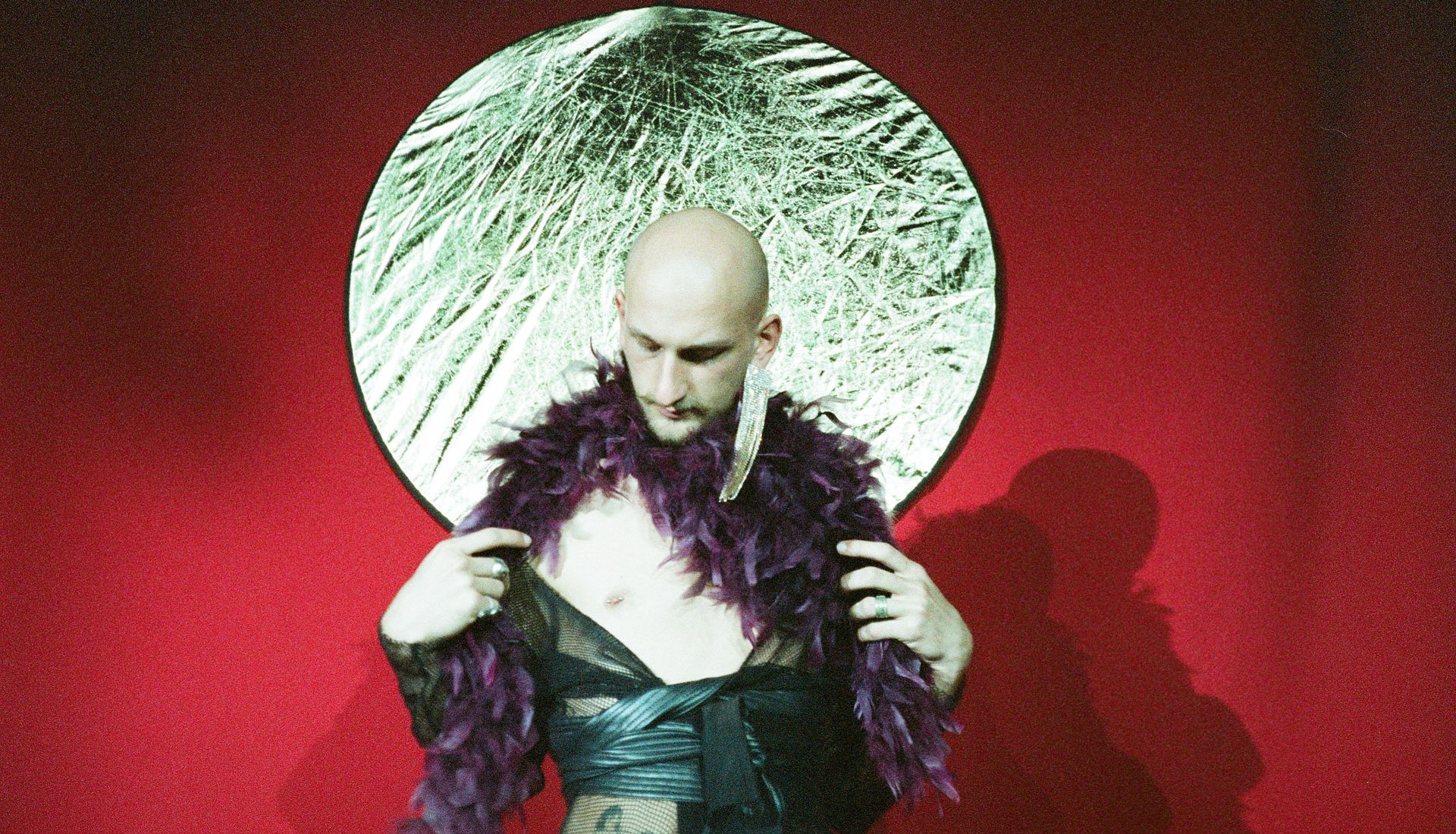Letter from Ingushetia: navigating ethnic tensions and Soviet scars across the Caucasian Iron Curtain
For almost three decades, the Russian republics of Ingushetia and North Ossetia have been separated by soldiers tasked to keep the peace amid bitter ethnic tensions. But even as the guns lie silent, the weight of history and conflict still makes itself felt — on both sides of this internal frontier.
Arriving at Vladikavkaz airport, the first thing you notice is that everyone leaves in the same direction. Migrant workers and tourists alike take the highway 20km or so to North Ossetia’s capital city. Within half an hour they will be in Vladikavkaz itself. Some will continue on over the mountains to Georgia: Tbilisi is only three hours away.
No one, however, takes the road left from the airport. I try three or four times to order a taxi; there are dozens of drivers waiting, but no one wants this order. Eventually, one takes my fare.
“Ingushetia? Seriously? Fucking hell. I suppose we can go, but you’ll have to pay me more for it. I’ve never even been there.”
Like Russia’s other autonomous North Caucasian republics, most of North Ossetia is covered by rolling grasslands at the foot of soaring mountains. Heading east towards Ingushetia, it’s not long before the checkpoints start.
The Ingush Capital of Magas. Image: Adam Sagov/Wikimedia Commons under a CC licence
Here, Russian soldiers and North Ossetian policemen wait at the roadside, rifles in hand. Though this is no international border — both sides of the barrier are, in theory, Russia — there are passports, of a sort. A driver with a license plate ending in a North Ossetian 15 will be waved through with a handshake and a smile. An Ingushetian 06 can earn its owner prodding fingers, brandished Kalashnikovs, and a car stripped down to its upholstery. If the driver is young enough, he might even be reported as a suspetcted member of a nezakonnaya voruzhennaya formatsiya — an illegal armed group; a terrorist.
After the checkpoint comes Chemen, an unremarkable village of red-brick cottages strung out along the road. “See that path?” says the driver, “the Ossetians live in the centre, on this side of it. The Ingush live on the other. People don’t cross over the path. Not since 1992, anyway.”
Speak to some Russians, and they will tell you that their Caucasian countrymen are irredeemably violent, destined to endless and incomprehensible ethnic feuds. It’s a virulent strain of racism that makes itself felt across Russia today, tainting everything from crude caricatures in television dramas to prejudice on the Moscow rental market.
Bad blood between the Ingush and Ossetians is a recent phenomenon, however. For centuries, the Ossetians — descendants of ancient Iranian nomads who straddled the Caucasus mountain range — rubbed along with the Ingush, a Muslim people closely related to the Chechens, as well as with any of their neighbours.
When the Russians arrived, they built Vladikavkaz, a handsome colonial town on the border of the Ingush and Ossetian lands whose name combines the Russian verb “to rule” (“vladi”) with “the Caucasus” (“Kavkaz”). The Ossetians mostly converted to Orthodoxy and began to work more closely with their new rulers: faithful Ossetian coachmen, innkeepers, and baggage carriers are the ever-present background actors in the Caucasian epics of Lermontov, Tolstoy, and Pushkin. The Ingush, meanwhile, were more indifferent to the new arrivals. While they did not welcome the newcomers, nor did they cause them, or the Ossetians, any particular problems.
In 1944, however, the status quo began to change. Having pushed back the Germans in a turning point for the Second World War, Soviet leader Josef Stalin decided to settle scores with those Soviet peoples he wrongly accused of collaborating with the invaders. Buddhist Kalmyks, Karachai Turks, and Crimean Tatars were rounded up and deported to Siberia and Central Asia.
In the 27 years since thousands of Ingush were expelled from Vladikavkaz, Ingushetia and Ossetia have had almost no contact. Kept apart by Russian soldiers, both sides have instead had time to brood on the past and demonise their enemy.
On 23 February — Red Army Day — it was the turn of the Chechens and Ingush. Communities were marched from their homes, loaded into cattle trucks, and shipped 2000 miles east. Within a few years, up to a third of the entire Ingush population were dead. Local Ossetians were invited to move into their former neighbours’ abandoned homes.
The Ingush exile lasted until 1957, when Soviet leader Nikita Khrushchev allowed the nations deported by his predecessor to go home. As the Ingush returned, most of the Ossetians who had replaced them left. Vladikavkaz, however, posed its own problems. Both Ingush and Ossetians had always lived in and around the city together, but following the war, the Ossetian authorities initially refused to accept the returnees. Gradually however, the Ingush returned, but now resented their Ossetian neighbours who, in turn, now feared them.
Tensions grew over decades before coming to a head in October 1992, when, amid the post-Soviet chaos, an incident in a mixed village outside Vladikavkaz spun out of control. Ingush militias fought Ossetian police for land both claimed as their own.
The Dargavs Necropolis in North Ossetia. Image: Maxpixel under a CC licence
Cut off from their compatriots, the entire Ingush population of Vladikavkaz was expelled and forced to trek through the mountains to Ingushetia in freezing conditions. After five days of bloodshed, more than 600 people were dead. Russian soldiers, backing their traditional Ossetian allies, moved in. They have never left. Even today, the border is lined with Russian military bases, built specifically to keep the two groups of Russian citizens apart.
In the 27 years since, Ingushetia and Ossetia have had almost no contact. Kept apart by Russian soldiers, both sides have had time to brood on the past and demonise their enemy. Ossetians talk of uncivilised Ingush jihadis, who cross the border only to leech money at Ossetia’s expense. The Ingush describe Ossetians as fascists and nationalists, out to finish Stalin’s genocidal work.
Though my airport taxi takes no more than 20 minutes to reach the Ingush capital Magas, the ride from Ossetia is a disorientating lurch between two entirely separate mental universes. Spending time in either republic, even an outsider comes unconsciously to accept the local version of events. Making the trip several times in one day is a dizzying and disconcerting experience.
Ingushetia’s mental universe is a kind of national melancholy. “Vladikavkaz for us is like Jerusalem for the Palestinians,” an Ingush friend tells me in Magas. “We can see it, we want it, but we can never really have it.”
Known in Ingush as “Boru”, the name of a pre-colonial village, the lost city wanders unexpectedly into Ingush conversations. Young, unmarried couples from Ingushetia often go there on dates, drawn by the city’s mythical status as well as its atmosphere of relative liberalism.
With Vladikavkaz gone, Ingushetia has tried to reinvent itself. In the early 90s, it briefly tried to become an internal tax haven before being shut down by Moscow. In the 2000s, as Chechnya’s independence struggle mutated into a wider insurgency, Ingushetia, a tiny republic full of dispossessed young men desperate for revenge, supplied a wildly disproportionate number of recruits to their ranks.
In 1994, work began on a new Ingushetian capital that could replace Vladikavkaz, financed by Moscow. The result, Magas, is part-Caucasian village, part hyper-modern metropolis. Its 8,000 inhabitants share their still only half-finished city with everything a modern capital could need: a presidential palace, a parliament, a university, a supreme court, a 5-star business hotel, and a United Russia headquarters, all linked together by state-of-the-art smart city software. Its centrepiece is the soaring Concord Tower, a 100 metre-high tribute to ancient Ingush mountain watchtowers, built in 2013.
But Ingushetia has not moved on. It is no accident that Magas is located barely a kilometre from the Ossetian border, as though poised to reabsorb lost territories. Even the city’s name was chosen with one eye on the Ossetian enemy: the original Magas was the capital of Alania, a medieval kingdom from which Ossetians claim descent. Perhaps less subtly, the Ingush government erected a massive, mock-medieval archway at Magas’ entrance, the Alania Gates. They face towards Ossetia with a simple, unspoken message: “We were here first.”
The Alania Gates. Image: Yevgeniy Shivtsov/Wikimedia Commons under a CC licence
Of course, if the Ingush want to go to Vladikavkaz, they can.
One frosty autumn morning at Magas’ brand new, federal-built bus station, I cram myself into a minibus along with a dozen chattering Ingush women in bright, florid dresses and headscarves. They are making the half hour run across the frozen frontline to buy food and medicine in enemy territory. The men stay behind for fear of provoking their former neighbours.
Winding its way through Vladikavkaz’s shabby suburbs, the minibus doesn’t go to the city’s main bus station; instead the driver drops us outside a derelict garage on a quiet street on the city’s eastern fringes. Furtively, the passengers scatter, heading separately into the city in ones and twos. The better to not attract attention.
“Vladikavkaz for us is like Jerusalem for the Palestinians,” an Ingush friend tells me in Magas. “We can see it, we want it, but we can never really have it”
Ossetians are fond of pointing out the cosmopolitan character of their republic, in which Russians, Georgians and Armenians, among others, all rub along more or else harmoniously.
As Soslan Fraev, the head of a district bordering Ingushetia, and a man more measured in his attitude to his neighbours than many, tells me: “Ours is a multinational republic, so we learn to be tolerant. But if you look at Ingushetia, only Ingush live there. Their mentality is very different.”
Many Ossetians feel that they too have suffered, but that they have chosen to rise above their difficulties. One recurring grievance is that Ossetians’ typically Caucasian features and culture prevent many ethnic Russians from truly accepting them as fellow countrymen. “No matter how successful you are, you’re still an outsider … a khach,” a well-heeled Moscow Ossetian tells me, using a Russian slur for Caucasians.
Others believe that the Ossetian people have been targeted just as the Ingush have. “What you have to understand is that deportation isn’t just an Ingush thing,” Batraz, a historian and Ossetian language activist tells me over coffee in Vladikavaz. “We don’t condone what happened with Stalin, but we have suffered too. When the Soviet Union fell, Georgian nationalists accused Ossetians of being Russian collaborators and drove 120,000 of us out of the country. In the 1990s, when I was growing up, one in every six people in North Ossetia were refugees from Georgia.”
Ingush visitors may see things differently. North Ossetia has responded to the breach with its neighbour by drenching itself in martial symbolism. On Prospekt Mira, Vladikavkaz’s main thoroughfare, loudspeakers boom out patriotic hymns, hailing the “undefeated, warrior nation” of Ossetia. Stalin statues, a rarity in Russia generally, are all over North Ossetia. Locals claim they are honouring the part-Ossetian leader who saved the world from fascism. The Ingush see them honouring a man responsible for their forced exile and genocide.
“You know who Stalin was, don’t you?” Boris Shadyzhev, an Ingush writer born in 1940s Kyrgyzstan to parents exiled by the dictator, asks me at his home one morning.
“An Ossetian,” he concludes gravely, answering his own question.
A memorial to the victims of the Beslan attack. Image: Felix Light
The only way out of North Ossetia is through Beslan. It is home to the republic’s only airport; all trains back north to Russia stop there. This small town is infamous for Russia’s 9/11: the three-day terrorist siege of a local school which claimed the lives of 334 parents, teachers and children in September 2004.
More than anything else however, Beslan is the reason why, 25 years on, this Cold War in miniature continues. When Shamil Basayev, the Chechen warlord who masterminded the siege, selected a band of mostly Ingush fighters to seize an Ossetian school, he knew precisely what he was doing: fanning an ethnic conflict to fuel his own insurgency.
Today, Basayev is dead and his forces defeated. However, Beslan was, in a sense, his victory. Immediately after the siege, the North Ossetian government banned any further resettlement of refugees driven from their homes in 1992. Reconciliation ground to a halt, where it has stayed ever since.
The scorched, empty skeleton of what was once Beslan School No. 1 is a shrine to the conflict. Ossetians from all over the republic make regular pilgrimages to the building’s shell, mourning an event that traumatised a nation, as well as reminding themselves why, when it comes to the Ingush, nothing can ever be forgiven or forgotten.
“The full responsibility for this rests on their heads.” says Azamat Pliyev, an Ossetian Vladikavkaz native who I meet in the burnt-out school ruins on the siege’s 15th anniversary. “The Ingush have always hated us. We never got on before 1992. And we never will.”


